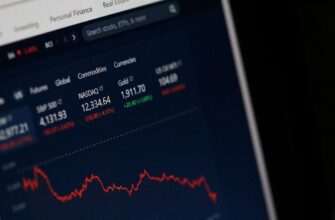Introduction
As decentralized finance (DeFi) evolves, yield farming USDC on Aave remains a cornerstone strategy for passive income seekers. By 2025, advancements in layer-2 scaling, regulatory clarity, and protocol upgrades could transform this approach into a more efficient, accessible opportunity. This guide explores how to capitalize on USDC yield farming via Aave in 2025, balancing high APY potential with emerging risks. Whether you’re a crypto veteran or newcomer, understanding this dynamic landscape is key to optimizing returns.
What is Yield Farming?
Yield farming involves lending or staking crypto assets in DeFi protocols to generate passive returns. Users deposit funds into liquidity pools, earning rewards from transaction fees, interest, or governance tokens. Unlike traditional savings, yields can be exponentially higher but carry smart contract and market risks. In 2025, expect AI-driven yield optimizers and cross-chain interoperability to streamline the process.
Why USDC and Aave Dominate Yield Strategies
USDC (USD Coin) offers stability as a dollar-pegged stablecoin, minimizing volatility risks while providing reliable yields. Aave leads DeFi lending with:
- Robust Security: Regular audits and $250M+ safety module.
- Multi-Chain Accessibility: Support for Ethereum, Polygon, Avalanche, and more.
- Innovative Features: Flash loans, rate switching, and aToken rewards.
- High Liquidity: Billions in TVL ensure stable APYs.
By 2025, USDC’s regulatory compliance and Aave’s V4 upgrade could cement this pair as a low-risk farming staple.
Aave in 2025: Key Predictions and Upgrades
Aave’s roadmap suggests transformative changes by 2025:
- Layer-2 Dominance: Gas fees slashed 90% via zk-Rollup integration.
- RWA Collateralization: Real-world assets (e.g., bonds) as loan collateral.
- Dynamic Interest Algorithms: AI-adjusted rates based on market demand.
- Enhanced Governance: Delegated voting for efficient protocol upgrades.
These innovations may push USDC APYs to 8-12% with reduced slippage and faster settlements.
How to Yield Farm USDC on Aave in 2025: Step-by-Step
- Acquire USDC: Buy from exchanges like Coinbase or via Aave’s fiat on-ramp.
- Choose a Wallet: Use non-custodial wallets (e.g., MetaMask) with multi-chain support.
- Bridge to Layer-2: Transfer USDC to low-fee networks like Polygon zkEVM.
- Connect to Aave: Visit app.aave.com, link your wallet, and select USDC pool.
- Deposit & Activate: Specify amount, approve transaction, and start earning interest in aTokens.
- Monitor & Compound: Reinvest earnings weekly via auto-compounding tools like Yearn Finance.
Risks and Mitigation Strategies
Rewards: Predictable APY, low volatility exposure, and compounding growth.
Risks:
- Smart Contract Exploits: Insure deposits via Nexus Mutual.
- Regulatory Shifts: Diversify across jurisdictions; monitor SEC guidelines.
- USDC Depegging: Rare but possible—limit exposure to <50% of portfolio.
- Liquidation: Avoid borrowing against deposits during high volatility.
Always practice risk management: start small, use stop-loss tools, and stay updated via Aave governance forums.
Frequently Asked Questions (FAQ)
Q: What APY can I expect farming USDC on Aave in 2025?
A: Historically 3-8%, but layer-2 adoption could push rates to 10-12% due to efficiency gains.
Q: Is USDC yield farming taxable?
A: Yes, rewards count as income in most countries. Track transactions with tools like Koinly.
Q: Can I farm USDC on Aave without Ethereum gas fees?
A: Absolutely. Use Aave on Polygon, Arbitrum, or other L2s for near-zero fees.
Q: How does Aave’s safety module protect my USDC?
A: It uses staked AAVE tokens as a $250M+ backstop for shortfall events (e.g., hacks).
Q: Will CBDCs compete with USDC farming on Aave?
A: Unlikely—CBDCs focus on payments, while Aave offers programmable yields CBDCs can’t match.
Q: Can I automate yield compounding?
A: Yes! Integrate with DeFi aggregators like Yearn or Beefy for auto-reinvestment.








